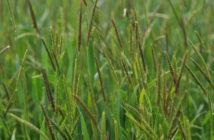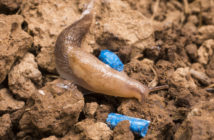Experts are urging growers not to overlook the value of cover crops as they plan their crop rotations for the new season ahead.
Dr Will Hartley, an environmental science lecturer at Harper Adams University, points to a whole host of productivity, soil health and water quality benefits. “Add to that the environmental focus of ELMs and the merits offered by cover crops can really stack up,” he says.

Will Hartley, environmental science lecturer at Harper Adams University
“Without the unique capabilities of a cover crop, weakened soil structure can lead to soil loss, and as a result, a loss of nitrates and other important nutrients too. This can then increase the requirement for additional applications of inputs such as fertiliser or muck, which comes at a cost.
“However, incorporating radish, chicory or other deep-rooted varieties into your cover crop mix can really help increase soil organisms and organic matter and break down compaction to build a strong soil structure, protecting it for the future” he says.
Dr Hartley explains that one challenge is producers are often unsure how to fit cover crops into their rotation, but there are several different ways of doing this.
“To see the full benefits, the ideal solution would be to plant your entire field with cover crops for several months, however this isn’t practical for many growers. But it can work well with maize crops,” he adds.
“Still, where planting the entire field isn’t an option, growers can plant cover crops in the buffer zones to increase organic matter. This can then act as a barrier to run-off and the leaching of nutrients, protecting watercourses.”
Leaving maize stubble over winter is not best practice. Severn Trent has worked closely with its farmers to help ensure this does not happen. Many maize growers are now using a Severn Trent Environmental Scheme (STEPS) grant to under-sow maize, as this can help prevent run-off, leaching and protect the soil structure.
Another option is to plant a later establishing mix such as Westerwold or turnips, after maize harvest, across the entire field. This can help prevent soil damage during the wetter months, which is key to maximising water quality, as well as crop productivity going forward.
Ultimately, cover crops can improve soil health, productivity and water quality as well as provide financial benefits for growers as it involves more efficient use of soil inputs.
Cover crop funding
Severn Trent is offering increased funding to Midland farmers within ground water catchments to encourage the planting of cover crops to improve soil structure and protect water quality.
Jodie Rettino, catchment management and biodiversity business lead at Severn Trent, says the water company has already supported over 5,000 farmers through its Farming for Water programme.
“We’re looking to work closely with more growers wanting to improve soil health to help overcome the challenge of nitrate run-off and leaching.
“Applications are currently open for extra funding specifically for those considering cover or catch crops in our target area, as well as those planning to under sow maize,” says Dr Rettino. This is available until the 30 June 2021, so farmers are being encouraged to get their applications in quickly.
For more information and full eligibility criteria visit www.stwater.co.uk/steps or contact your local Severn Trent agricultural adviser for support with the application.




